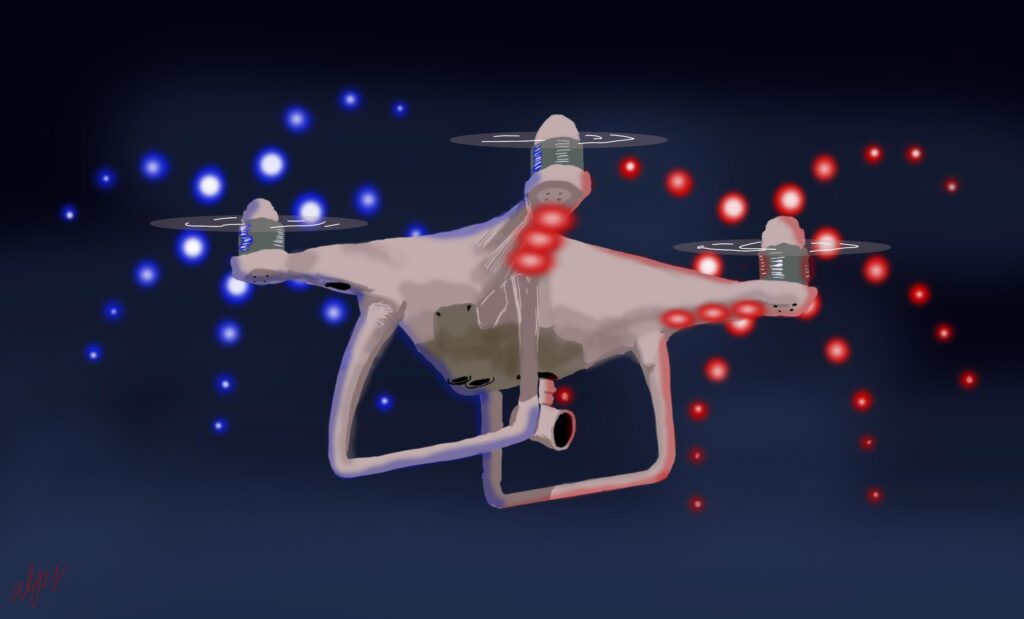
Eighty-four percent of Americans are said to have participated in Fourth of July celebrations in 2022 (Statista). Regarded by many as one of the most significant dates in American history, Independence Day is a time when people from all across the country celebrate the birth of an independent nation. Traditions and festivities include barbecues, parades, festivals, large gatherings, and—last but not least—fireworks.
Fireworks are a tradition that has marked Independence Day since the very beginning of this nation. The original thirteen colonies fired a cannon thirteen times with thirteen fireworks in Philadelphia on the first July Fourth (Cincinnati). This custom persists today, as an estimated 14,000 fireworks displays shroud the night sky every July Fourth (Farmer’s Almanac). According to the American Pyrotechnics Association, 416.3 million pounds of consumer fireworks were used in 2021, while professional display fireworks reached 12.5 million pounds. In short, Americans take fireworks very seriously.
Yet, this old tradition may be taking a turn as some cities are now replacing fireworks with a new alternative: drones. But why?
To understand the need for this new alternative, it is essential to understand the impact of fireworks on both people and the environment.
All fireworks contain gunpowder, often called black powder, in a shell. When the firework is ignited, the chemical reaction creates an explosion. Mineral elements are mixed with gunpowder to create the colors we see in the sky.
So, what happens when the fireworks go up into the air? Do they just disappear? Unfortunately, no. The explosion releases chemicals that undergo combustion up in the air, producing very toxic pollutants and contaminants like carbon dioxide, carbon monoxide, sulfur dioxide, nitrogen, and particulate matter (Earth.org). All of these contribute to climate change, contaminate soil and water, and pose health risks as they diminish the air quality. Even booming noises and bright lights are shown to negatively impact animal behavior and frighten them.
Hoping for a sustainable alternative, several cities are switching to drone shows, especially in parts of California with high wildfire risks, where multiple fire agencies have warned against using fireworks (Curry). In fact, the National Fire Protection Association reported that “fireworks started an estimated 12,264 fires in 2021, including 2,082 structure fires, 316 vehicle fires, and 9,866 outside and other fires. These fires caused 29 civilian injuries and $59 million in direct property damage” (NFPA).
Last year, the Alameda County Fair had immense success with its drone show, and they went on to expand the project, by adding more drones. Cities in Arizona, like Flagstaff, have even banned or restrained firework usage.
This year, at the Gloria Molina Grand Park, the Fourth of July Block Party hosted its first 3-D drone show, consisting of 500 remote-controlled drones within the twelve-minute show period.
As climate change worsens and concerns for pollutant-related health risks increase, it’s clear that Fourth of July drones may be signaling both an end to an old tradition and the birth of approaching festivities with a sustainable lens.
References
Americans who celebrate Independence Day 2022. (n.d.). Statista. https://www.statista.com/statistics/1233201/americans-who-celebrate-independence-day/#:~:text=In%202022%2C%2084%20percent%20of
Curry, R. (2023, July 3). Some Bay Area events are replacing Fourth of July fireworks with safe alternatives – drones. ABC7 San Francisco. https://abc7news.com/july-4th-fireworks-drone-shows-replacing-bay-area-displays/13457506/
Han, J. (2023, April 19). The Environmental Impact of Fireworks. Earth.org. https://earth.org/environmental-impact-of-fireworks/
NFPA – Fireworks. (n.d.). Www.nfpa.org. https://www.nfpa.org/Public-Education/Fire-causes-and-risks/Seasonal-fire-causes/Fireworks
Ogwude, H., & Pitofsky, M. (2023, July 3). Why do we celebrate the Fourth of July? Everything to know about Independence Day 2023. The Enquirer. https://www.cincinnati.com/story/news/2023/07/03/why-do-we-celebrate-july-4-how-old-is-the-holiday-everything-to-know/70369930007/
Staff, F. A. (n.d.). Fourth of July 2023: History, Trivia, and Celebrations. Farmers’ Almanac – Plan Your Day. Grow Your Life. Retrieved July 8, 2023, from https://www.farmersalmanac.com/fourth-july-independence-day#:~:text=These%20days%2C%20estimates%20from%20the
The views and opinions expressed are those of the authors and do not necessarily reflect nor represent the Earth Chronicles and its editorial board.










